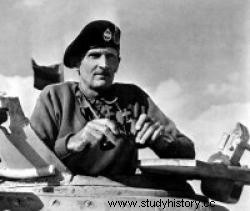
Before launching the main offensive on the front of the 1st Army , it was important to improve the starting position.
In the north, struggling from April 23 to 30 in the mountainous terrain of the coastal sector, the American 2nd Corps, aided by the African Free Corps and the goumiers, clears, as far as Jefna, the Sedjenane valley, road to Bizerte, and the corridor of Sidi-N'Sir, road to Mateur. In this fierce struggle, the 34th American Division, now seasoned, took its revenge for its failure at Fondouk, by breaking, north of Sidi-N'Sir, "the fierce resistance of the formidable Barenthin regiment".
In the center, it was necessary to clear the base of Medjez-el-Bab to the east, from where the main attack was to start. To do this, it was necessary both to remove, on the left bank of the Medjerda, the famous "Longstop Hill", which blocked the road to Tébourba, and, on the right bank, to form a large head of bridge in which the assault mass
could deploy to rush directly on Tunis.
All these preparatory operations in the Medjerda valley are carried out by the 5th Corps, in eight days of hard fighting, from April 22 to 30.
South of the valley, the British 9th Corps, reinforced by the 1st and 6th D.B., launched on April 22 , between Goubellat and Bou-Arada, by the north bank of the Sebkret-Kourzia marshes, an attack which was to begin the overflow from the south of the defenses of the Medjerda valley, very solidly organized, but when they exceeded the infantry , British tanks clash with the 10th Panzer Division. Then the 21st intervened in turn and a confused melee of tanks developed. Finally, when, on April 24, the 15th also threw itself into the fight, the British armored divisions had to fall back.
But this failure was not in vain. Taken by fear and believing to see there the principal attack, the Germans indeed carried in this sector, in the south of the valley of Medjerda, all their armored reserves, which will facilitate the rupture in the valley itself. class='autobr' />In addition, these disproportionate defensive efforts by the Germans wore out the panzer divisions, which fought tirelessly and whose equipment, constantly diminished, was no longer renewed.
Positivism was a theoretical current created by Auguste Comte that influenced the politics practiced in the early years of the republican period in Brazil. Positivism was a theoretical current created by the French philosopher Auguste Comte (1798-1857) who argued that the rule for progress social w
